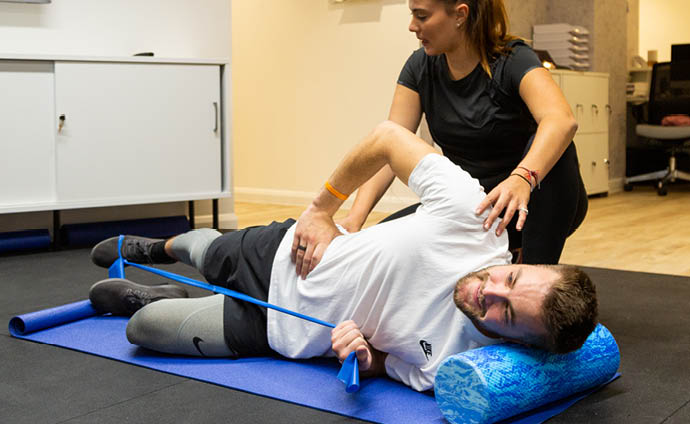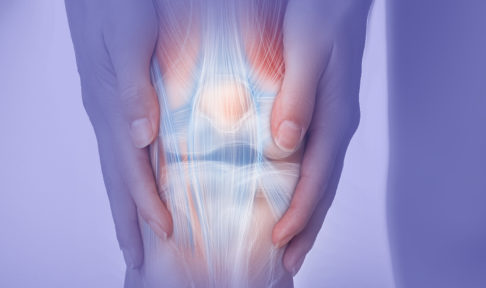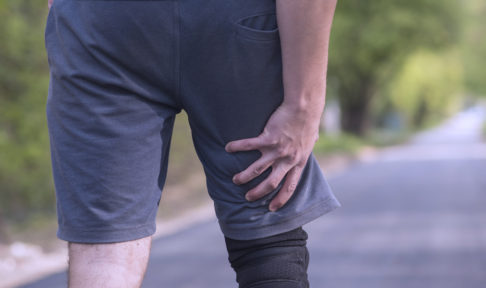Whilst winter sports are great for your fitness and a lot of fun, it also means you are using parts of our body that sometimes lie dormant for many other months. And this can lead to an increased chance of injury…
One of the biggest problem areas we see is the hips. The two most common hip injuries that we treat are hip impingement and greater trochanteric pain —and unfortunately it can be easy to confuse the two. So, how do we know which is which and what do we do about it once we know?
First, it’s important to understand the causes and symptoms of hip pain in general.
What is the cause of hip pain?
As we mentioned, many of the sports popular in winter time (such as football and skiing) are very tough on your hips! But more regular exercise such as HIIT classes at the gym or even one of the popular 8-week challenge style gym programs, with high intensity workouts that include lots of jumping or hopping, will create strain on your hip flexor from overuse. Your hip flexors are a group of muscles at the front of your hip, and as the name suggests, they are responsible for helping you move or flex your leg and knee up towards your body (from your hip).
There are a variety of causes of hip pain and not everyone’s hips are the same, which is why we always start by doing a thorough assessment of our patients to better understand their body and needs. Some people’s hip sockets face different angles, making them more prone to certain issues —there are actually more than 20 different shapes of hip overall, which is why considering an individual’s physiology and circumstances are so important.
Commonly, muscle imbalances around the hips and deep abs are key causes of hip pain, as is your torso and stabilising glue muscles failing to switch on.
What are the symptoms?
Hips are complex creatures. If you think about your hip compared with another joint, say, your knee, which only bends or straightens, a healthy hip goes in all directions and can generally perform a much deeper flex. This means there are many more variables in how it works, but also more potential for issues…
When things aren’t going well, the aforementioned imbalances or weaknesses will cause your hip flexors to overload and your thigh muscles to be overly tight and overactive, which can cause pain in your hip.
Some people (we see it particularly often in men aged between 27 and 35 who have just started new gym programs!) will experience a deeper pain, caused by a ball and socket issue that doesn’t present itself until a certain age.

So, what is hip impingement?
Hip impingement (also known as femoroacetabular impingement) is when the ball of the hip socket is pinching up against the cup of the hip socket, causing pain, stiffness or discomfort in the front of your hip. Normally hip impingement occurs because of an abnormality in either the ball or the socket and will only show itself as you age or after activities that include prolonged periods of bending movements, such as cycling. It’s also common for hip impingement to lead to early arthritis in the hip if left untreated.
Okay, so then what is greater trochanteric pain?
While greater trochanteric pain is ALSO pain, discomfort or stiffness in your hip, it tends to occur on the outside or side of your hip rather than the front. Sometimes hip impingement can progress into greater trochanteric pain, and other times it will occur entirely on its own. Greater trochanteric pain isn’t necessarily caused by an abnormality in the body, rather it occurs over time due to strain or overuse of the tendons on the outside of the hip. Ironically it can be caused by prolonged periods of sittingorprolonged periods of high intensity activity, such as running or jumping.
How would a physio treat both of these issues?
Essentially, when it comes to both hip impingement and greater trochanteric pain, loosening the areas that are too tight and building up strength in areas that are weak is the aim of the game. Luckily, Spectrum offers a wide range of different treatments and technologies that can achieve this, and our team is always able to create the ideal personalised treatment plan that combines the right mix for you.
Both hip impingement and greater trochanteric pain can benefit from dry needling, mobilisation and glute release exercises to help loosen up the muscles and tendons around the hip. Strengthening exercises can also work wonders in helping speed up the recovery process too.
Greater trochanteric pain may also specifically benefit from Shockwave therapy, a unique treatment that delivers safe shockwaves to the affected area to encourage new blood vessels to develop quicker, which ultimately leads to a faster recovery.
At Spectrum you are able to get all of the above (and more!) in the one appointment, just as soon as you’ve been assessed and a personalised treatment plan has been developed for you by our team. After all, life’s too short to live with hip pain…
Have you been suffering with hip pain for too long? Book a time to see one of our specialists and get it sorted, fast.



